Broken Landscape - Liang Shaoji Solo Exhibition
Broken Landscape - Liang Shaoji Solo Exhibition
Opening: Saturday 15th of November at 16:00
Date: November 15– December 31, 2008
Venue: ShanghART Beijing, No. 261 Cao Chang Di, Old Airport Road, Beijing 100015, China
Tel: +86 10 6432 3202
Fax: +86 10 6432 4395
E-mail: infobj@shanghartgallery.com
Opening hours: 11am – 6 pm (Closed on Mondays)
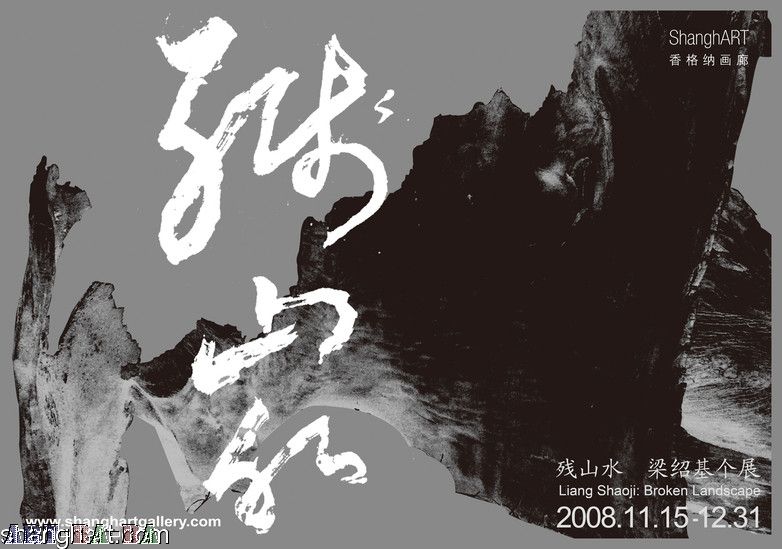
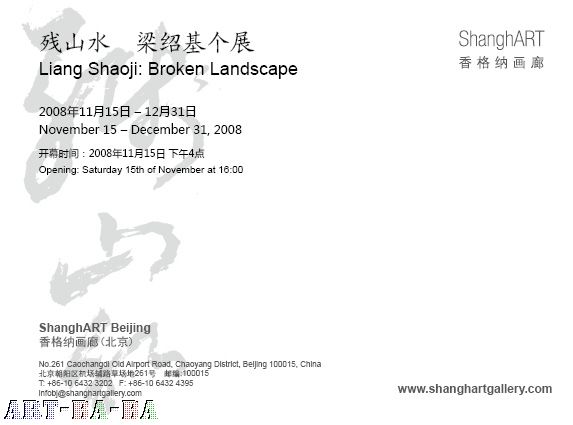
‘Broken Landscape’ – Liang Shaoji at ShanghART Beijing
‘Broken Landscape’ is the extension and expansion of Liang Shaoji’s 2007 solo exhibition ‘Cloud’, a poetic expression of the Chinese state of mind. The artworks in ‘Broken’ portray a fractured visual image that incorporates ‘silkworm’ as a medium to reflect nature, life, science, history and society; and ‘Zen’ as a mental framework. These three characters are pronounced similarly in Chinese and convey profound meaning.
Through working with elements of nature, the exhibition stresses purity and simplicity, creating a sense of emptiness. The artist uses a variety of natural materials to exhibit the life-cycle of silkworms. Surrounded by ancient wooden remnants and suspended in air, the silkworm installation (about 10 meters in length) is reminiscent of a traditional landscape drawing. The wooden forms, shaped over time by river currents, reflect the imagery of a sunken boat: ¬ a symbol of fleeting life, suffering, and generosity, all notions found in ancient Chinese poetry. By using natural elements and alluding to Chinese thoughts, ‘Broken Landscape’ creates a poetic atmosphere, a virtual landscape of breeding silkworms and ancient wooden forms that provides visitors a space for quiet meditation.
Liang’s early work consisted of serenely abstract hangings and installations made from textiles, often including bamboo. In his representative work, Natural Series, he created a series of installations and performances using live silkworms, combining biology with art, and integrating sculpture, installation, and weaving. The artist also uses bamboo to deepen the reflection on the subjects of nature, life and society. As Liang Shaoji states, ‘I think art is all about the comity between societies, the faith in life, and the release which humans perceive from nature’.
Liang Shaoji, a close observer of the contemporary art world and frequent participant at all possible Biennales around the world, was born in 1945. He graduated from Zhejiang Academy of Ars. He is now residing in Tiantai Mountain in rural Zhejiang province, and working as a guest professor at the China Academy of Art, Hangzhou. His works have been widely exhibited at national and international art institutions, including: Chinese Avant-garde Art Exhibition (National Art Museum of China, Beijing, China, 1989), The 48th International Art Exhibition Venice Biennale (Italy, 1999), The 6th International Istanbul Biennale (Turkey, 1999), The 5th Biennale d’Art Contemporain de Lyon (France, 2000), The 3rd and The 6th Shanghai Biennale (China, 2000 and 2006), ‘Cloud’ – solo exhibition at ShanghART H-Space (China, 2007).
For further exhibitions news and artists information, please visit www.shanghartgallery.com
For high resolution dpi images, please contact Miss Helen Zhu at helen@shanghartgallery.com or infobj@shanghartgallery.com
Opening: Saturday 15th of November at 16:00
Date: November 15– December 31, 2008
Venue: ShanghART Beijing, No. 261 Cao Chang Di, Old Airport Road, Beijing 100015, China
Tel: +86 10 6432 3202
Fax: +86 10 6432 4395
E-mail: infobj@shanghartgallery.com
Opening hours: 11am – 6 pm (Closed on Mondays)


‘Broken Landscape’ – Liang Shaoji at ShanghART Beijing
‘Broken Landscape’ is the extension and expansion of Liang Shaoji’s 2007 solo exhibition ‘Cloud’, a poetic expression of the Chinese state of mind. The artworks in ‘Broken’ portray a fractured visual image that incorporates ‘silkworm’ as a medium to reflect nature, life, science, history and society; and ‘Zen’ as a mental framework. These three characters are pronounced similarly in Chinese and convey profound meaning.
Through working with elements of nature, the exhibition stresses purity and simplicity, creating a sense of emptiness. The artist uses a variety of natural materials to exhibit the life-cycle of silkworms. Surrounded by ancient wooden remnants and suspended in air, the silkworm installation (about 10 meters in length) is reminiscent of a traditional landscape drawing. The wooden forms, shaped over time by river currents, reflect the imagery of a sunken boat: ¬ a symbol of fleeting life, suffering, and generosity, all notions found in ancient Chinese poetry. By using natural elements and alluding to Chinese thoughts, ‘Broken Landscape’ creates a poetic atmosphere, a virtual landscape of breeding silkworms and ancient wooden forms that provides visitors a space for quiet meditation.
Liang’s early work consisted of serenely abstract hangings and installations made from textiles, often including bamboo. In his representative work, Natural Series, he created a series of installations and performances using live silkworms, combining biology with art, and integrating sculpture, installation, and weaving. The artist also uses bamboo to deepen the reflection on the subjects of nature, life and society. As Liang Shaoji states, ‘I think art is all about the comity between societies, the faith in life, and the release which humans perceive from nature’.
Liang Shaoji, a close observer of the contemporary art world and frequent participant at all possible Biennales around the world, was born in 1945. He graduated from Zhejiang Academy of Ars. He is now residing in Tiantai Mountain in rural Zhejiang province, and working as a guest professor at the China Academy of Art, Hangzhou. His works have been widely exhibited at national and international art institutions, including: Chinese Avant-garde Art Exhibition (National Art Museum of China, Beijing, China, 1989), The 48th International Art Exhibition Venice Biennale (Italy, 1999), The 6th International Istanbul Biennale (Turkey, 1999), The 5th Biennale d’Art Contemporain de Lyon (France, 2000), The 3rd and The 6th Shanghai Biennale (China, 2000 and 2006), ‘Cloud’ – solo exhibition at ShanghART H-Space (China, 2007).
For further exhibitions news and artists information, please visit www.shanghartgallery.com
For high resolution dpi images, please contact Miss Helen Zhu at helen@shanghartgallery.com or infobj@shanghartgallery.com
Under construction
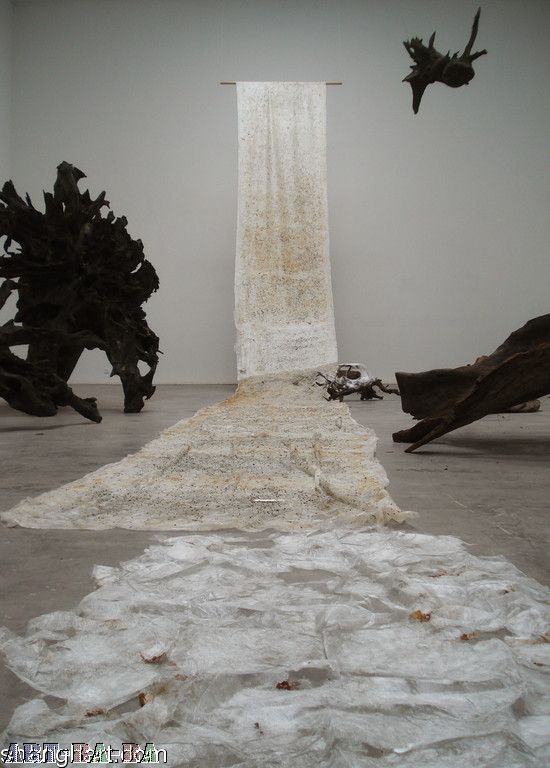
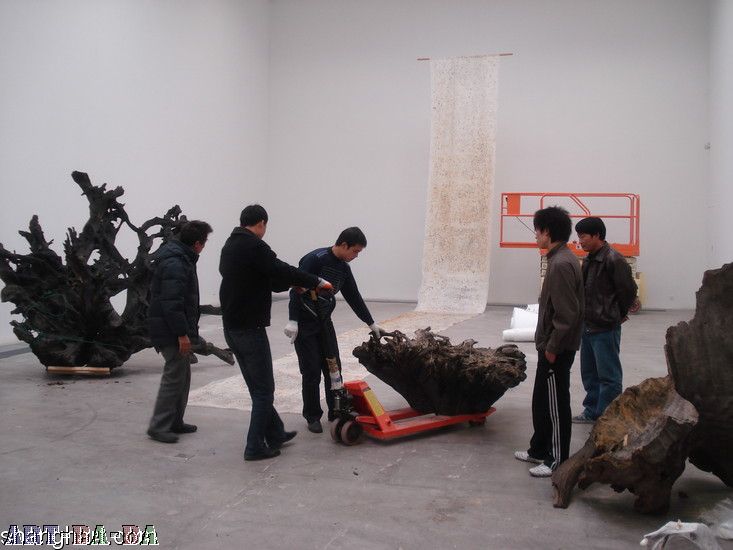
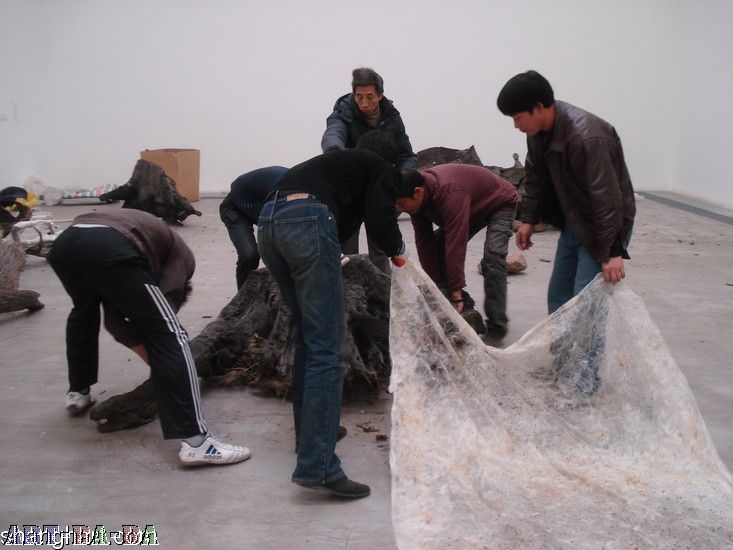
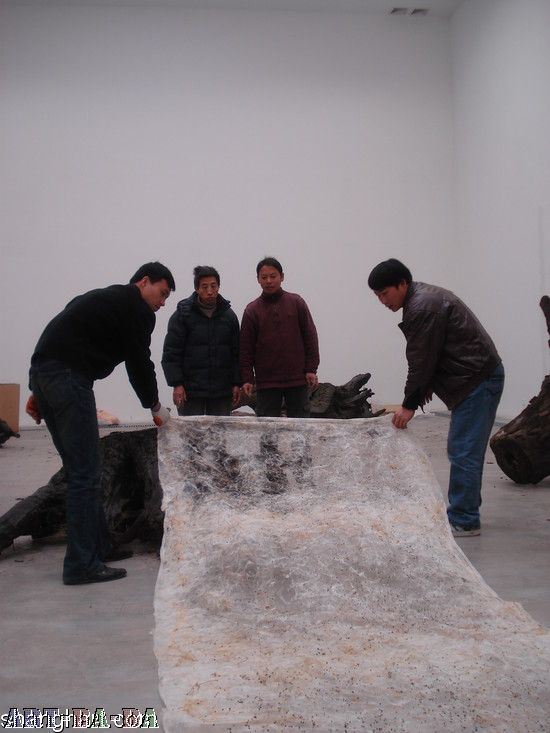
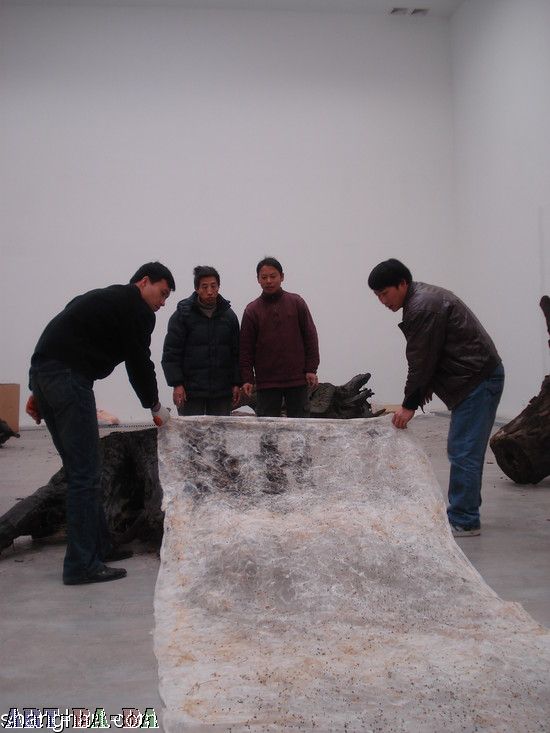
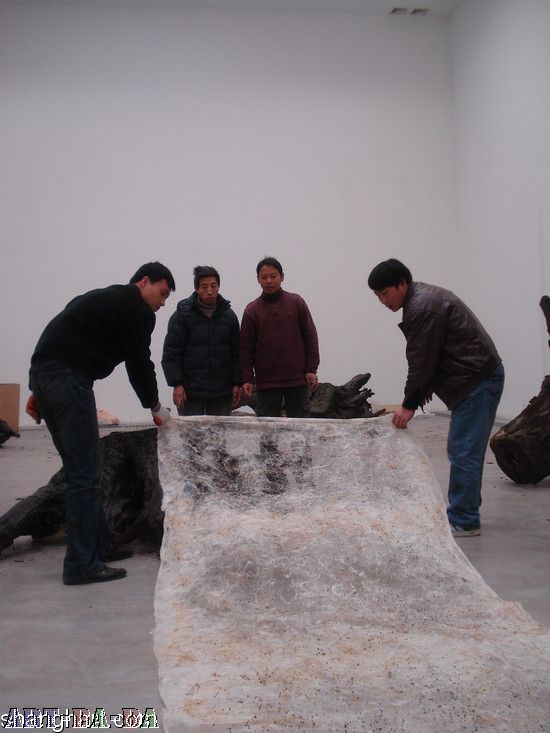
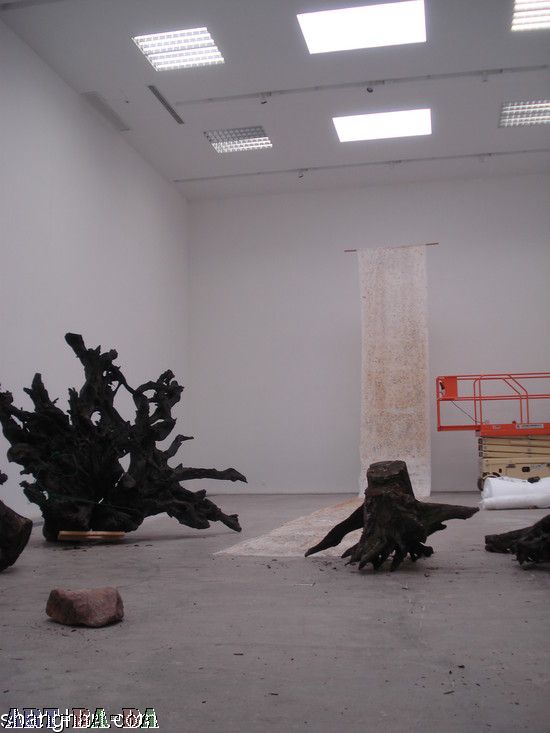
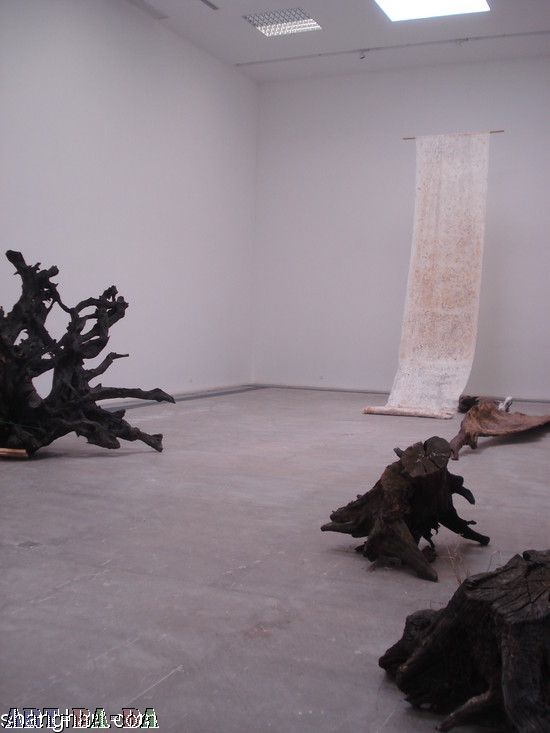
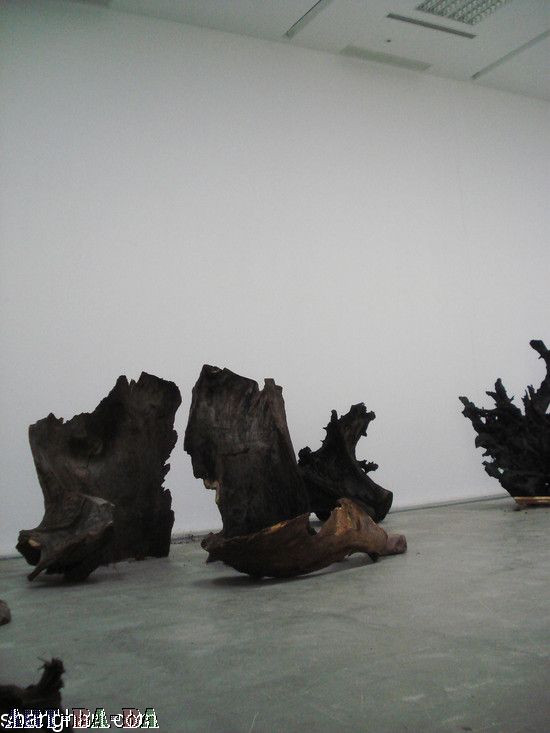
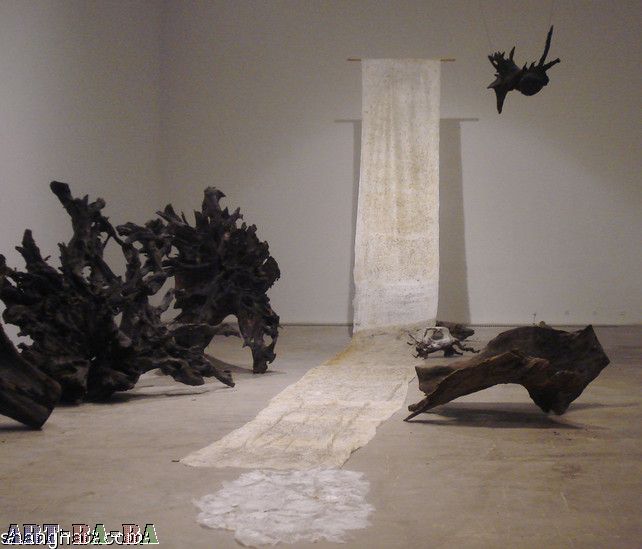
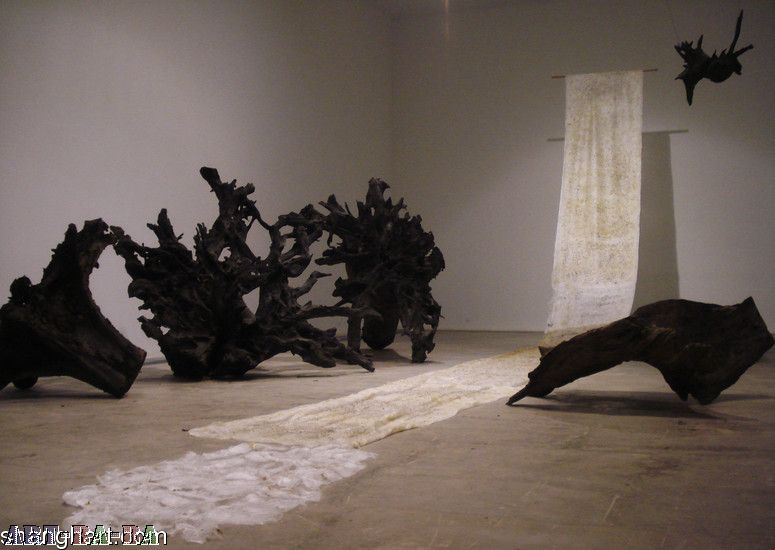
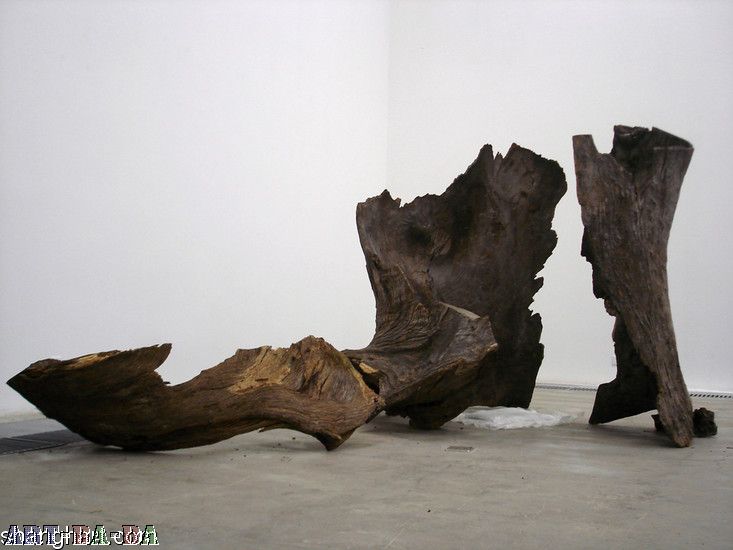
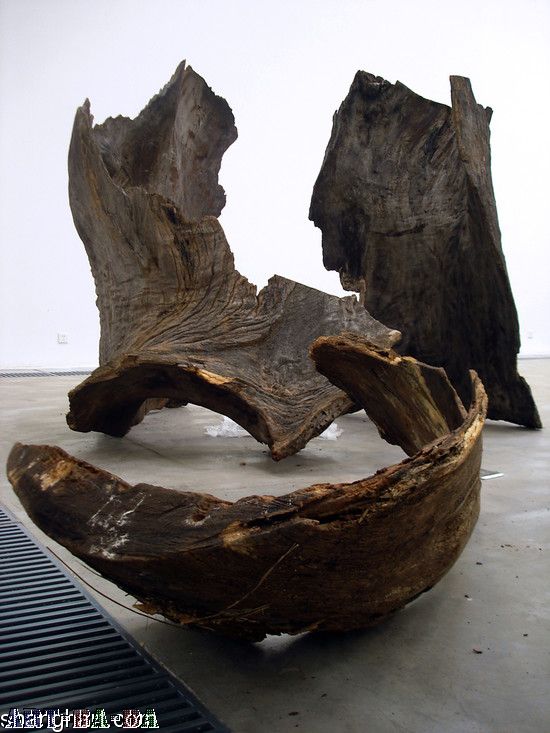
LIANG Shaoji
LSJU054
Broken Landscape series No.1
OtherInstallation(ancient camphor wood)
2008
LIANG Shaoji
LSJU055
Broken Landscape series No.2
OtherInstallation(ancient sunken wood 水沉木)
2008
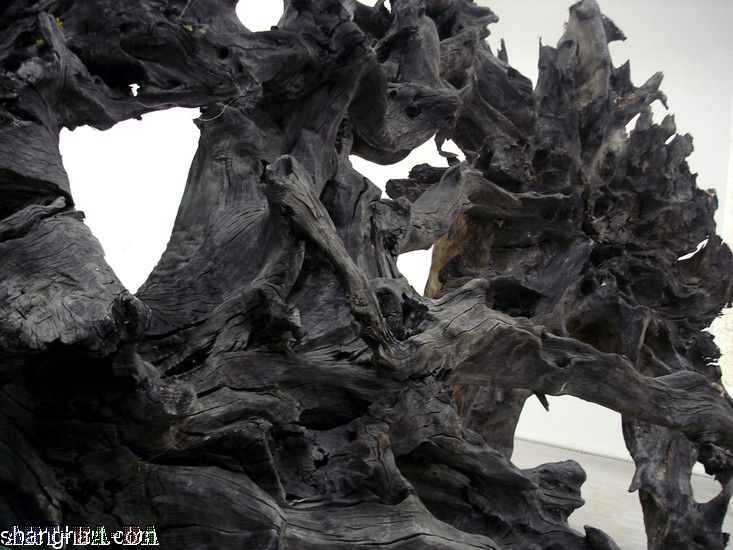
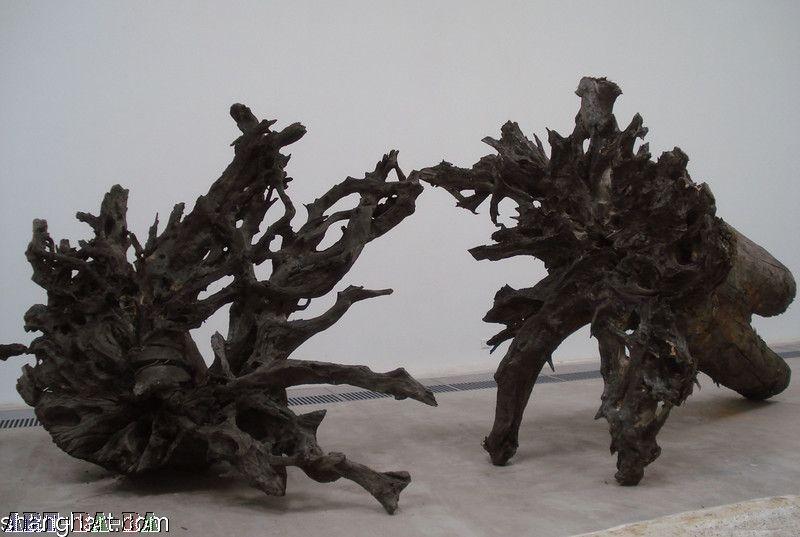
LIANG Shaoji
LSJU056
Broken Landscape series No.3
OtherInstallation(silk, silkworm excretion, ancient wood chips丝箔 蚕砂 古木残片)
2008

LIANG Shaoji
LSJU051
Cloud
VideoVideo
12 minutes 53 seconds
2008
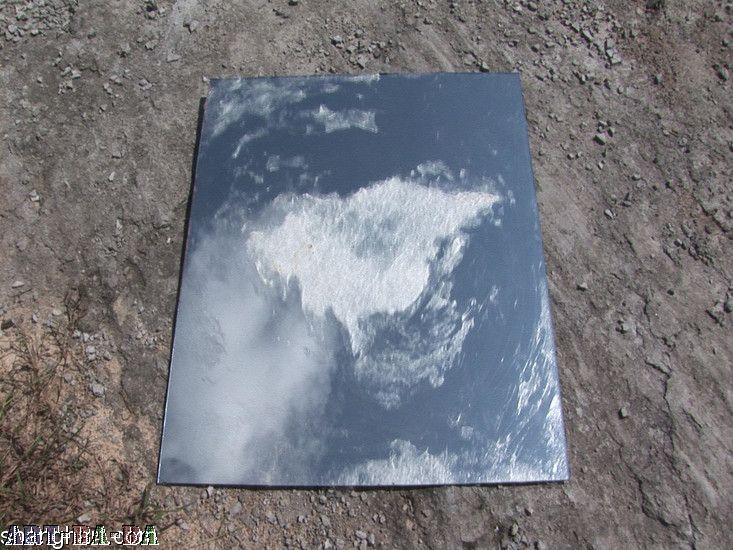
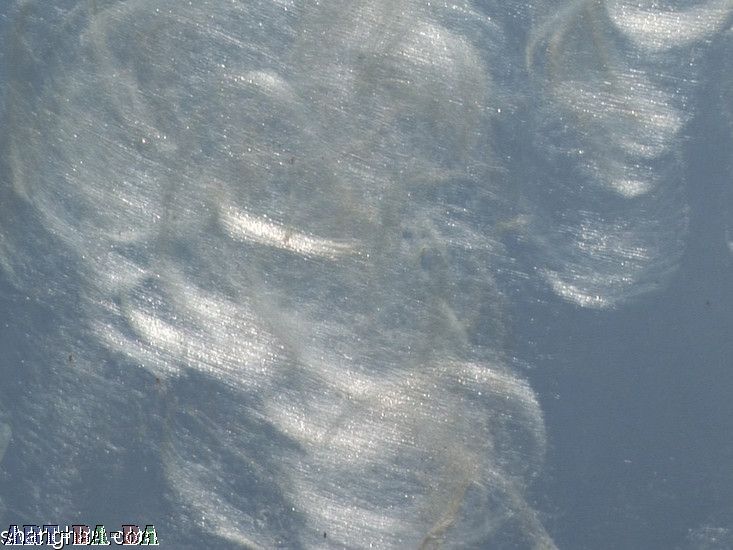
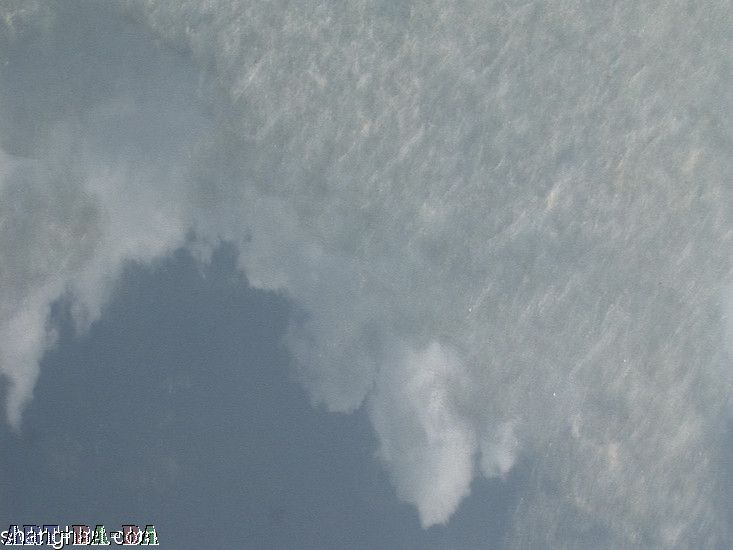
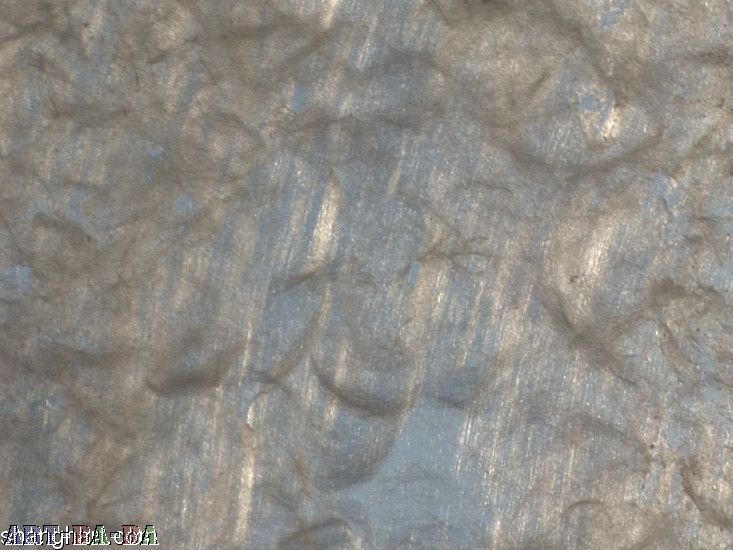
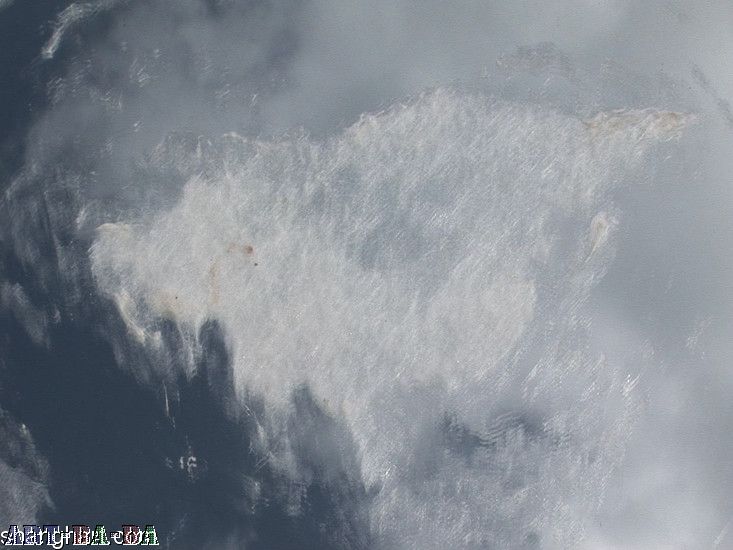
LSJU055
Broken Landscape series No.2
OtherInstallation(ancient sunken wood 水沉木)
2008


LIANG Shaoji
LSJU056
Broken Landscape series No.3
OtherInstallation(silk, silkworm excretion, ancient wood chips丝箔 蚕砂 古木残片)
2008

LIANG Shaoji
LSJU051
Cloud
VideoVideo
12 minutes 53 seconds
2008





LIANG SHAOJI
Born In 1945, Works and lives in Tian Taishan
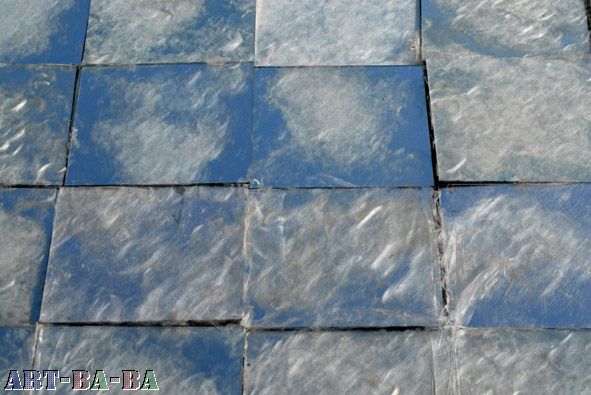
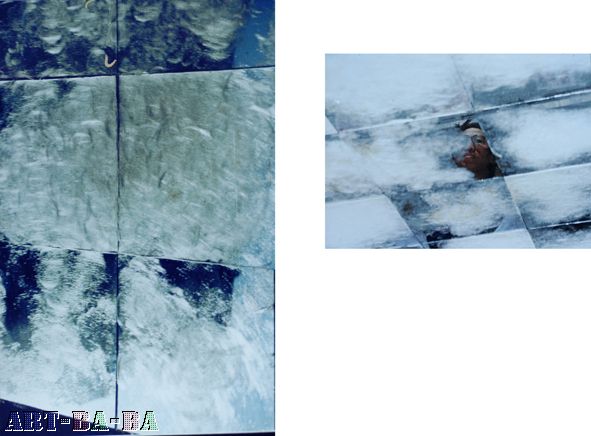
LIANG Shaoji
LSJU027
Nature No. 101 - Cloud Mirror
Edition of 10
Photo
100.0 * 150.0 cm
2007
Introduction:
Liang Shaoji is well known for working with animals and nature in his art. But to understand his work, we must understand something of the Chinese traditions he is referring to when he lovingly rescues fragments of China’s architectural past from destruction, wraps references to the sadness and the strife of human life in raw silk thread, and atones for the unrest and the competition of the floating world by sitting on top of the sacred mountain of his village watching in a mirror how the clouds go by. We must know a little at least of the all-encompassing importance nature has in Chinese thought, and the ancient poetry that has canonized the images of silk and bamboo, candles and clouds, as symbols fleeting of life, of suffering and generosity. But even while referring to Chinese tradition and associative philosophy, Liang’s works target the here and now, transforming those well-known references into thoroughly contemporary installations and performances. Demanding unusual expertise and extraordinary techniques, his works are slow in the making and difficult to interpret. His installations don’t easily submit to commodification - they should be seen as the residue of actions and thought processes, indeed as markers of a chosen path of life, rather than as mere objects.
His early works consisted of serenely abstract hangings and installations made from textiles, often including bamboo as well. They made him a well-respected figure in international exhibitions of arts and crafts. But he felt that this was not enough to satisfy his desire to make art. In 1988 he started working with silkworms, breeding them and using them in his works. From that moment on, a whole new oeuvre emerged, in which he tries to combine biology, bio-ecology, weaving and sculpture, installation and action. Generally these works are entitled Nature Series, followed by a number and a date. He refers to them as sculptures made of time, life and nature, as “recordings of the fourth dimension”. Many works consist of objects (often objects trouvées) wrapped in the silk threads he has his silkworms spin around them. The silkworm symbolizes generosity; its thread human life and history. Liang often makes use of this symbolism to soften or ease the violence, cruelty or sadness represented by the objects he uses.
Marianne Brouwer
Liang Shaoji was born in Shanghai in 1945, graduated from Zhejiang Fine Art School, and studied at Varbanov Institute of Tapestry in Zhejiang Academy of Art. Today he resides and works in Linhai. Liang Shaoji has exhibited widely in international Biennales and Triennales, the Venice (1999), Istanbul (1999), Lyon (2000) and Shanghai Biennales (2000 and 2006) among them. Recent exhibitions include CLOUD, ShanghART H-Space, Shanghai (2007), Mahjong: Contemporary Chinese Art from the Sigg Collection, Hamburger Kunsthalle, Hamburg (2006).
Biography:
Basic
1945 Born in Shanghai, Guangdong Zhongshan native. He lives in Linhai, a small town near the Tiantai Mountains.
Education
1986 Studied at Varbanov Institute of Tapestry in Zhejiang Academy of Art.
1965 Graduated from Zhejiang Fine Art School.
Solo Exhibitions
2008 Broken Landscape, ShanghART Beijing 261 Cao Chang Di, Old Airport Road, Chaoyang District, Beijing 100015
2007 Cloud-LIANG Shaoji Solo Exhibition, ShanghART H-Space, Shanghai
Group Exhibitions
2008 FIAC 2008-Booth B12, Art Fairs Grand Palais, Paris
2008 Beijing 798 Art Festival-Art is not something, 798 Art Centre, Beijing
The 3rd Nanjing Triennial-Reflective Asia, RCM ART MUSEUM, Nanjing
Opuscule-ShanghART Group Exhibition, ShanghART H-Space, Shanghai
Poetic Realism-A Reinterpretation of Jiangnan—Contemporary Art from South China, Centro de Arte Tomás y Valiente
Selected, ShanghART H-Space, Shanghai
2007 Aired, ShanghART Gallery, Shanghai
The Sixth Shenzhen Contemporary Sculpture Exhibition-A Vista of Perspectives, OCT Contemporary Art Terminal, Shenzhen
A Vista of Perspectives, OCT Contemporary Art Terminal of He Xiangning Art Museum
2006 6th Shanghai Biennale - Hyper Design, Shanghai Art Museum, Shanghai
Poetical Realism: A Reinterpretation of Jiangnan, RCM Art Museum, Nanjing
Mahjong: Contemporary Chinese Art from the Sigg Collection, Hamburger Kunsthalle, Hamburg, Germany
2005 Mahjong-Contemporary Chinese Art from the Sigg Collection, Kunstmuseum Bern, Bern, Switzerland
2003 Second Hand Reality, Today Art Museum, Beijing
China Now Art Exhibition, China Millennium Monument, Beijing
Junction-Chinese Contemporary Architecture of Art, Lianyang Architecture Art Museum, Shanghai
2002 The 2nd Pancevo Biennial, Pancevo, Serbia
The Italian Fiber Art Triennial, Italy
2000 Gate of the Century: 1997-1999’ Art Invitation Exhibition from China, Gate of the Century: 1997-1999’ Art Invitation Exhibition from China, Modern Art Museum Chengdu
The 3rd Shanghai Biennale, Shanghai Art Museum, Shanghai
The 5th Biennale d'Art Contemporain de Lyon: Partage d'Exotismes, Lyon Art Museum, Lyon, France
1999 48th International Art Exhibition Venice Biennale-APERTO over ALL, Venice, Italy
6th International Istanbul Biennial, Istanbul, Turkey
1998 Im Spiegel Der Eigenen Tradition: Ausstellung Zeitgenossicher Chinesischer Kunst (A Reiew of Tradition)-Chinese Contemporary Art, German embassy in China, Beijing
Jiangnan: Modern and Contemporary Art from South of the Yangzi River, Emily Carr Institute and Design, Vancouver, Canada
Jiangnan-Modern and Contemporary Art form South of the Yangzi River, Grunt Gallery, Vancouver, Canada
1996 The COMO International Tapestry Exhibition, Italy
1995 95' Art Critics' Nomination Show of Sculpture and Installation, Nanjing
1994 The 3rd Documenta of Chinese Modern Art, East China Normal University, Shanghai
1993 The 7th International Fiber-art Symposium, Riga, Latvia
1991 The 1st Documental Exhibition of Chinese Modern Art, Beijing, China
1990 The 8th International Biennial of Miniature Textiles, Szombathely, Hungary
1989 China/Avant-garde Art Exhibition, National Art Museum of China, Beijing
Chicago International New Art Forms Expo, Navy Pier
The 3rd International Fiber-art Symposium, Riga
1987 The 13th International Biennale of Tapestry, Lausanne, Switzerland
Born In 1945, Works and lives in Tian Taishan


LIANG Shaoji
LSJU027
Nature No. 101 - Cloud Mirror
Edition of 10
Photo
100.0 * 150.0 cm
2007
Introduction:
Liang Shaoji is well known for working with animals and nature in his art. But to understand his work, we must understand something of the Chinese traditions he is referring to when he lovingly rescues fragments of China’s architectural past from destruction, wraps references to the sadness and the strife of human life in raw silk thread, and atones for the unrest and the competition of the floating world by sitting on top of the sacred mountain of his village watching in a mirror how the clouds go by. We must know a little at least of the all-encompassing importance nature has in Chinese thought, and the ancient poetry that has canonized the images of silk and bamboo, candles and clouds, as symbols fleeting of life, of suffering and generosity. But even while referring to Chinese tradition and associative philosophy, Liang’s works target the here and now, transforming those well-known references into thoroughly contemporary installations and performances. Demanding unusual expertise and extraordinary techniques, his works are slow in the making and difficult to interpret. His installations don’t easily submit to commodification - they should be seen as the residue of actions and thought processes, indeed as markers of a chosen path of life, rather than as mere objects.
His early works consisted of serenely abstract hangings and installations made from textiles, often including bamboo as well. They made him a well-respected figure in international exhibitions of arts and crafts. But he felt that this was not enough to satisfy his desire to make art. In 1988 he started working with silkworms, breeding them and using them in his works. From that moment on, a whole new oeuvre emerged, in which he tries to combine biology, bio-ecology, weaving and sculpture, installation and action. Generally these works are entitled Nature Series, followed by a number and a date. He refers to them as sculptures made of time, life and nature, as “recordings of the fourth dimension”. Many works consist of objects (often objects trouvées) wrapped in the silk threads he has his silkworms spin around them. The silkworm symbolizes generosity; its thread human life and history. Liang often makes use of this symbolism to soften or ease the violence, cruelty or sadness represented by the objects he uses.
Marianne Brouwer
Liang Shaoji was born in Shanghai in 1945, graduated from Zhejiang Fine Art School, and studied at Varbanov Institute of Tapestry in Zhejiang Academy of Art. Today he resides and works in Linhai. Liang Shaoji has exhibited widely in international Biennales and Triennales, the Venice (1999), Istanbul (1999), Lyon (2000) and Shanghai Biennales (2000 and 2006) among them. Recent exhibitions include CLOUD, ShanghART H-Space, Shanghai (2007), Mahjong: Contemporary Chinese Art from the Sigg Collection, Hamburger Kunsthalle, Hamburg (2006).
Biography:
Basic
1945 Born in Shanghai, Guangdong Zhongshan native. He lives in Linhai, a small town near the Tiantai Mountains.
Education
1986 Studied at Varbanov Institute of Tapestry in Zhejiang Academy of Art.
1965 Graduated from Zhejiang Fine Art School.
Solo Exhibitions
2008 Broken Landscape, ShanghART Beijing 261 Cao Chang Di, Old Airport Road, Chaoyang District, Beijing 100015
2007 Cloud-LIANG Shaoji Solo Exhibition, ShanghART H-Space, Shanghai
Group Exhibitions
2008 FIAC 2008-Booth B12, Art Fairs Grand Palais, Paris
2008 Beijing 798 Art Festival-Art is not something, 798 Art Centre, Beijing
The 3rd Nanjing Triennial-Reflective Asia, RCM ART MUSEUM, Nanjing
Opuscule-ShanghART Group Exhibition, ShanghART H-Space, Shanghai
Poetic Realism-A Reinterpretation of Jiangnan—Contemporary Art from South China, Centro de Arte Tomás y Valiente
Selected, ShanghART H-Space, Shanghai
2007 Aired, ShanghART Gallery, Shanghai
The Sixth Shenzhen Contemporary Sculpture Exhibition-A Vista of Perspectives, OCT Contemporary Art Terminal, Shenzhen
A Vista of Perspectives, OCT Contemporary Art Terminal of He Xiangning Art Museum
2006 6th Shanghai Biennale - Hyper Design, Shanghai Art Museum, Shanghai
Poetical Realism: A Reinterpretation of Jiangnan, RCM Art Museum, Nanjing
Mahjong: Contemporary Chinese Art from the Sigg Collection, Hamburger Kunsthalle, Hamburg, Germany
2005 Mahjong-Contemporary Chinese Art from the Sigg Collection, Kunstmuseum Bern, Bern, Switzerland
2003 Second Hand Reality, Today Art Museum, Beijing
China Now Art Exhibition, China Millennium Monument, Beijing
Junction-Chinese Contemporary Architecture of Art, Lianyang Architecture Art Museum, Shanghai
2002 The 2nd Pancevo Biennial, Pancevo, Serbia
The Italian Fiber Art Triennial, Italy
2000 Gate of the Century: 1997-1999’ Art Invitation Exhibition from China, Gate of the Century: 1997-1999’ Art Invitation Exhibition from China, Modern Art Museum Chengdu
The 3rd Shanghai Biennale, Shanghai Art Museum, Shanghai
The 5th Biennale d'Art Contemporain de Lyon: Partage d'Exotismes, Lyon Art Museum, Lyon, France
1999 48th International Art Exhibition Venice Biennale-APERTO over ALL, Venice, Italy
6th International Istanbul Biennial, Istanbul, Turkey
1998 Im Spiegel Der Eigenen Tradition: Ausstellung Zeitgenossicher Chinesischer Kunst (A Reiew of Tradition)-Chinese Contemporary Art, German embassy in China, Beijing
Jiangnan: Modern and Contemporary Art from South of the Yangzi River, Emily Carr Institute and Design, Vancouver, Canada
Jiangnan-Modern and Contemporary Art form South of the Yangzi River, Grunt Gallery, Vancouver, Canada
1996 The COMO International Tapestry Exhibition, Italy
1995 95' Art Critics' Nomination Show of Sculpture and Installation, Nanjing
1994 The 3rd Documenta of Chinese Modern Art, East China Normal University, Shanghai
1993 The 7th International Fiber-art Symposium, Riga, Latvia
1991 The 1st Documental Exhibition of Chinese Modern Art, Beijing, China
1990 The 8th International Biennial of Miniature Textiles, Szombathely, Hungary
1989 China/Avant-garde Art Exhibition, National Art Museum of China, Beijing
Chicago International New Art Forms Expo, Navy Pier
The 3rd International Fiber-art Symposium, Riga
1987 The 13th International Biennale of Tapestry, Lausanne, Switzerland
Interviewed with Dr. Paul Gladston from the University of Nottingham Ningbo
by Liang Shaoji 2007-09-10
I like the works by Nietzsche, he said, god is dead.
I like General Relativity by Albert Einstein. He found the order of the chaos universe. That’s a beauty of number, nature and art.
I like Wolfgang Laib who lives super-naturally and super-religion with few social contacts and collects pollen in the field.
I like the lead book created by Anselm Kiefer which showed his deep thought about the human civilization.
I like the solitary and cold fantastic artistic conception in works of Chu Ta (1626-1705, a famous Chinese poet and painter during the Ming and Qing dynasty) and Alberto Giacometti. There is full of poetry in Chu Ta’s painting while Giacometti showed the space constraint by slim and degraded figures. The previous one showed the elegant strength with loose composition and on the contrary, the latter made a tight one to show the force of gathering, smashing and rebounding.
I like the clay sculpture of virgin boys and girls in Maiji Mountain. Their vivid charm would never in the shade of Monalisa’s secret smile.
I much prefer to create a universe for my soul, to pursue my thought, and the foot of my activity and my life since art is no more than a release of human against the natural perception and a heaven of relax the individual.
In the process of created the work Nature Series, I regard the breaking in with silkworms as seeking an eye into the universe, an experiment which combined the god and human, a recognition of science, history and the society. The ancient famous Taoist Zhuang Zi once said there’s no high and low between things (On the Equality of All Things). Reading the world of silkworms is just like interpretation the kingdom of humanity. To treasure all things means to cherish ourselves.
When the fruit of art creation can not explain the author’s object and wisdom, the process and conception will take the place of it. In Nature Series, the rolling life nirvana of the silkworms opened up a boundless space. The process was much more important that the result. The reason why creation of Nature Series could last for 20 years is that it gradually becoming a progress of understanding my life, a part of my life. It is a monument for my life, my determination, my faith and belief. And I am a silkworm.
The universal circle of life is the first nature. Art is the second.
All the things that disobey the life and law of motion are unnatural. For science should be the way and tool for human to discover nature and live with it, but not the mean to force and aggress it. Anything that overrides the life is anti-science and anti-nature. The creation of Nature Series is based on a research of bombycology and physiotechnology, and expanding from the view of biophysiography to discover the new version of bio-art.
In ancient China, the movement of cosmic inventory was called Qi (gas). Lao-tzu (a Chinese philosopher in the Spring and Autumn period) once said, One begets Two, Two begets Three, Three begets all things, All things carry the female and embrace the male. And by breathing together, they live in harmony. Actually, the silkworm spinning, even its whole life is a kind of Qi, a kind of breathing and force of life. I made my fist solo exhibition named by Cloud is just because of this: life, change, freedom, surpassing and gandhabba.
by Liang Shaoji 2007-09-10
I like the works by Nietzsche, he said, god is dead.
I like General Relativity by Albert Einstein. He found the order of the chaos universe. That’s a beauty of number, nature and art.
I like Wolfgang Laib who lives super-naturally and super-religion with few social contacts and collects pollen in the field.
I like the lead book created by Anselm Kiefer which showed his deep thought about the human civilization.
I like the solitary and cold fantastic artistic conception in works of Chu Ta (1626-1705, a famous Chinese poet and painter during the Ming and Qing dynasty) and Alberto Giacometti. There is full of poetry in Chu Ta’s painting while Giacometti showed the space constraint by slim and degraded figures. The previous one showed the elegant strength with loose composition and on the contrary, the latter made a tight one to show the force of gathering, smashing and rebounding.
I like the clay sculpture of virgin boys and girls in Maiji Mountain. Their vivid charm would never in the shade of Monalisa’s secret smile.
I much prefer to create a universe for my soul, to pursue my thought, and the foot of my activity and my life since art is no more than a release of human against the natural perception and a heaven of relax the individual.
In the process of created the work Nature Series, I regard the breaking in with silkworms as seeking an eye into the universe, an experiment which combined the god and human, a recognition of science, history and the society. The ancient famous Taoist Zhuang Zi once said there’s no high and low between things (On the Equality of All Things). Reading the world of silkworms is just like interpretation the kingdom of humanity. To treasure all things means to cherish ourselves.
When the fruit of art creation can not explain the author’s object and wisdom, the process and conception will take the place of it. In Nature Series, the rolling life nirvana of the silkworms opened up a boundless space. The process was much more important that the result. The reason why creation of Nature Series could last for 20 years is that it gradually becoming a progress of understanding my life, a part of my life. It is a monument for my life, my determination, my faith and belief. And I am a silkworm.
The universal circle of life is the first nature. Art is the second.
All the things that disobey the life and law of motion are unnatural. For science should be the way and tool for human to discover nature and live with it, but not the mean to force and aggress it. Anything that overrides the life is anti-science and anti-nature. The creation of Nature Series is based on a research of bombycology and physiotechnology, and expanding from the view of biophysiography to discover the new version of bio-art.
In ancient China, the movement of cosmic inventory was called Qi (gas). Lao-tzu (a Chinese philosopher in the Spring and Autumn period) once said, One begets Two, Two begets Three, Three begets all things, All things carry the female and embrace the male. And by breathing together, they live in harmony. Actually, the silkworm spinning, even its whole life is a kind of Qi, a kind of breathing and force of life. I made my fist solo exhibition named by Cloud is just because of this: life, change, freedom, surpassing and gandhabba.